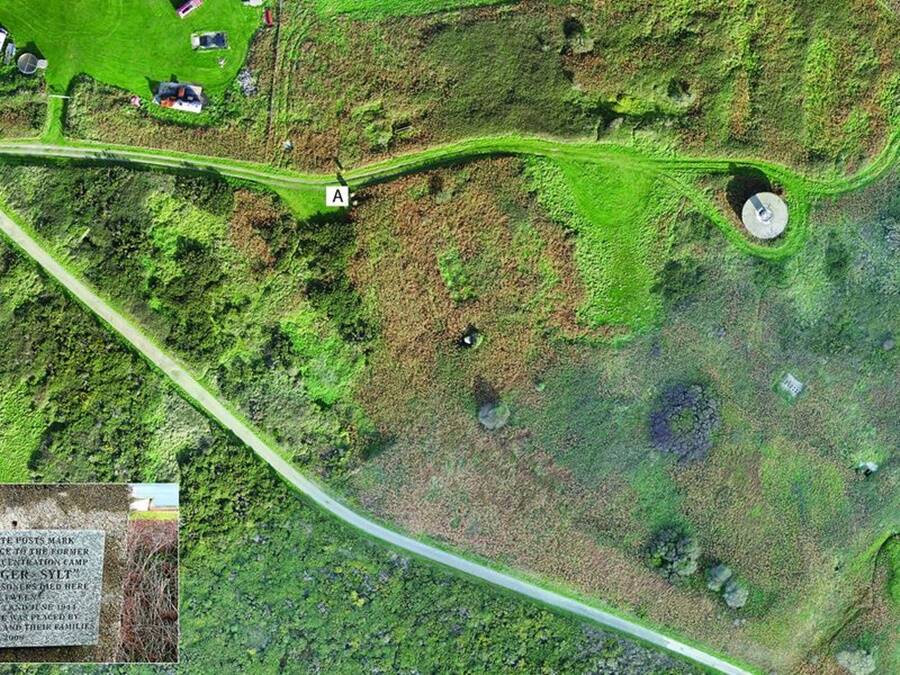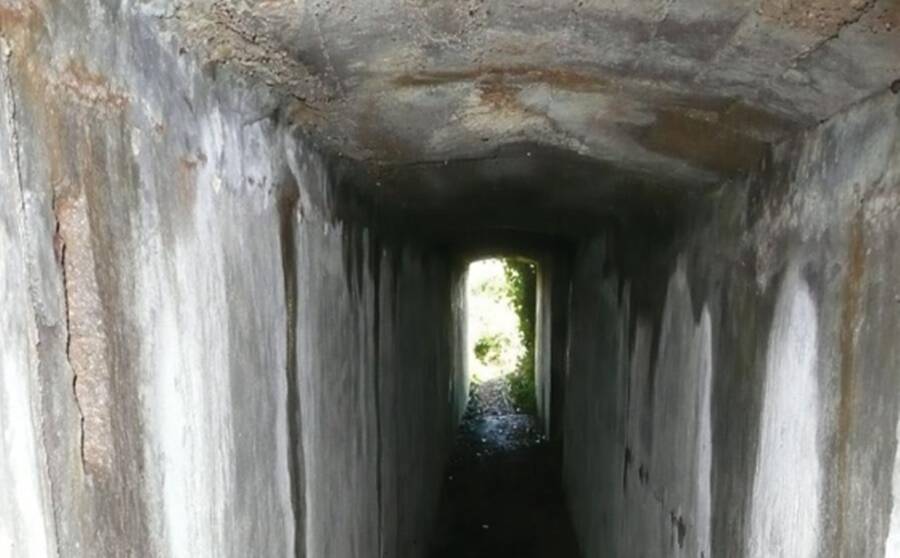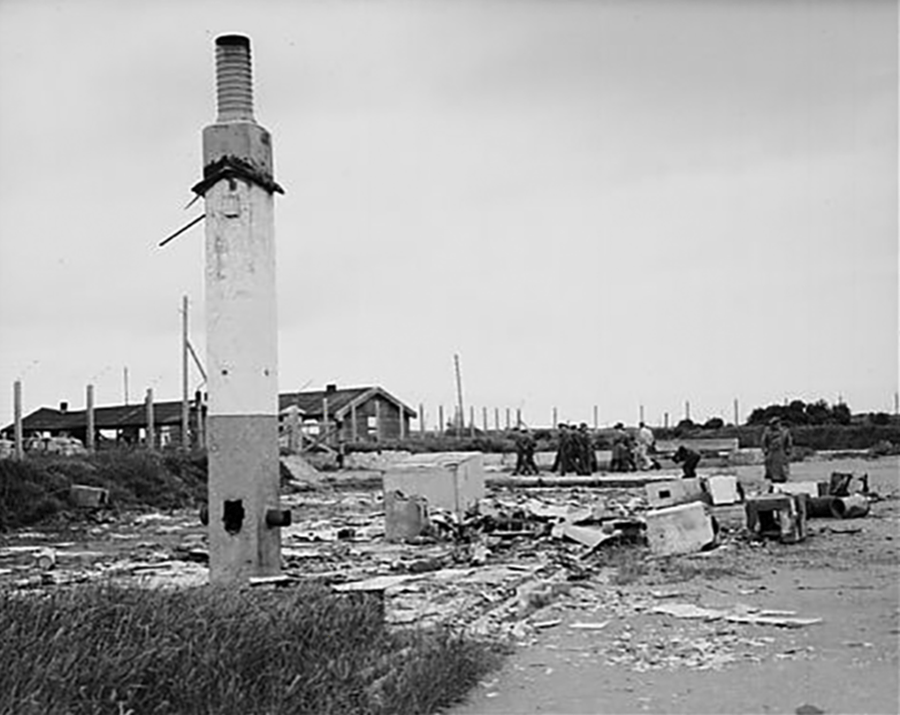More than 1,000 prisoners were held at the Nazi concentration camp. However, details of its past have been kept buried — physically and figuratively.

Centre of Archaeology/Staffordshire University/FlyThruAerial view of the Sylt concentration camp site in 2017. A memorial plaque can be seen at bottom center.
During World War II, on Alderney, a small piece of land in the British Channel Islands, stood the Nazi concentration camp known as Sylt. It is the only known Nazi concentration camp to ever stand on British soil.
According to National Geographic, the camp’s history has not been scientifically examined in the last 75 years since the end of the Second World War. But a recent group of archaeologists have changed that.
In a new study published in the journal Antiquity, researchers revealed how the Sylt Nazi camp changed over time, going from housing a few hundred prisoners to becoming a full-fledged concentration camp holding 1,000 detainees.
Most importantly, the study dug into the horrendous torture and violence suffered by the island camp’s prisoners, unearthing trauma which has been all but washed away from the island’s pristine shores over time.

Centre of Archaeology/Staffordshire UniversityThe underground tunnel uncovered by researchers which was likely used to transport women prisoners to the villa brothels.
According to archaeologist Caroline Sturdy Colls, the paper’s lead author, although some Alderney locals were supportive of the study’s efforts, British authorities and other locals were reluctant to revisit the history of the Nazi camp.
Traces of the concentration camp — much of which was erased by the natural environment — have been “physically and metaphorically buried.”
“As a British citizen and a researcher, I hadn’t heard about the atrocities perpetrated on Alderney during World War II until I was doing my Ph.D. research,” Sturdy Colls, who teaches conflict archaeology and genocide investigation at England’s Staffordshire University, admitted.
“I had a wider awareness of the fact that the Germans occupied the Channel Islands, but not really that they built those camps.”
The Nazis descended on the British Channel Islands in July 1940 following France’s fall into the hands of the Germans.
They wasted no time adding the island posts to their “Atlantic Wall” coastal defense system which stretched across the western edge of Europe. The Nazis set up slave labor camps like Sylt to build up fortifications on the island.
The study of the Sylt concentration camp began in 2010. Sturdy Colls and her team used forensic archaeological methods, studying historical aerial photos and archival records to reconstruct the camp’s history.
They also used LiDAR and ground-penetrating radar which serve as non-invasive survey techniques. LiDar, in particular, has become increasingly popular among archaeologists working in sensitive environments.
Among their most bizarre discoveries was an underground tunnel at the camp site that led to the commandant’s house. The tunnel appeared to have been used often and researchers theorized that it may have been used to transport women to “be taken into a brothel within the villa.”
Based on the archival and archaeological evidence, researchers were able to construct a 3D model of the Sylt camp and retrace the evolution of the site’s architectural development.
The physical details they managed to reconstruct matched with witness accounts from those who remember the nearly-forgotten torture site.
Following the Nazis’ exit from the islands after they lost the war, multiple investigations were carried out by British authorities which included gut-wrenching testimonies from hundreds of witnesses.
One particularly violent account came from a Spanish Republican and forced laborer named Francisco Font who recalled seeing a man “strung up” on the main gate for four days after allegedly stealing bread.

© Trustees of the Royal Air Force Museum
The remains of the Sylt Nazi camp in 1945.
Others spoke of similar beatings, dog attacks, and shootings. When a prisoner died, witnesses said that the camp doctor was often ordered to sign pre-printed death certificates, usually with the cause of death as “faulty circulation” or “heart failure,” without ever examining the body.
“It makes a difference for the perpetrators if they’re being watched by the civilian population,” explained historian Paul Sanders who wrote about the German occupation of the islands.
“The fact that there was no set of civilian eyes watching what was going on in Alderney led to a much more profoundly brutal environment.”
Alderney’s nearly isolated location made food deliveries from the mainland difficult which exacerbated the already abysmal feeding provided to prisoners.
While the Nazis recorded an official death count of 103 prisoners at Sylt, researchers estimate that the true number is more than 700.
“There is still a small group of people who want to put the past behind them and continue without looking into it too much,” said Graham McKinley, a legislator with the States of Alderney, of the new study. “I believe we should be doing a lot more to show the world what actually happened here.”
Next, learn about Krispy Kreme’s shocking Nazi ties and discover the atrocious history of the Nazis’ Bergen-Belsen concentration camp through 44 haunting photographs.




